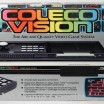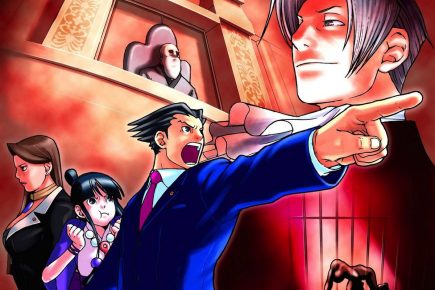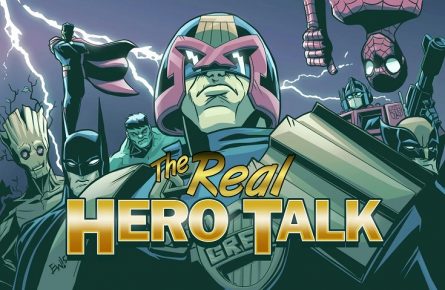ColecoVision – Old School Goodness


I’m firmly convinced that the reason I’m still such a dedicated gamer to this day has a lot to do with the quality of my early experiences. The NES, Super Nintendo or Genesis/MegaDrive were ground zero for many current enthusiasts, for obvious reasons. While three greats certainly fed my personal passion for gaming, I need to go back even further into the truly ancient era of the 2nd generation of consoles to point to my origin story. Toss another beer can and banana peel into the Mr. Fusion, Doc, as we’re going waaaaay back to 1982.
My first console was a true classic in every sense of the word – a ColecoVision. Developed by Coleco, a toy company, originally known as the Connecticut Leather Company, it was actually the successor to a less successful first-gen machine called the Telstar. Coleco certainly had a diverse range of products – this is the same company that created the famed Cabbage Patch Kids, the Adam Computer and the accursed ALF doll.
I can only imagine how odd a ColecoVision system must appear to someone who hasn’t seen one before. The size isn’t unusual, nor is the black and silver colour, but when you notice that in place of two joysticks there appears to be a pair of push-button telephones attached to the top, confusion would be understandable. About the kindest thing I can say about these controllers is at least they aren’t as bad as the ones on the Intellivision . The short, flat headed stick is stiff, stubborn and imprecise, and the action buttons on the side are mushy. The keypad is typically used only in making game type or difficulty selections, though some titles (such as Mouse Trap) require card overlays that highlight specific keypad buttons for play. My family went through more than a few controllers over the years, though I suppose that can be said of other consoles we owned as well.

Cartridges are top-loaded and an expansion slot on the front allows for some interesting additional optional features – more on that later. Alternate input devices such as a wheel, trackball and “Super Action Controller“ were released that each had at least as many shortcomings as the standard controller. Like many home consoles of its day, connection to a TV set was through an RF switch, another component prone to faults, in my experience.
I’ve not painted the most flattering picture thus far, so onto the most important and significant aspect of the ColecoVision experience: the games. While I had never actually set foot in an arcade at the age I first tried a Coleco, even I was aware of the primary point of differentiation it possessed: highly faithful recreations of popular, current arcade hits. Not true ports, mind you, but nonetheless very colourful, responsive and accurate home versions of the best games on the market. The game bundled with the system itself, Nintendo’s iconic Donkey Kong was among the best examples, as were most of the other launch titles. I would later own an Atari 2600, and while it was a wonderful system in its own right, it failed to deliver a graphical experience even close to the arcade. Anyone who’s played the woeful 2600 version of Donkey Kong can appreciate the chasm between it and the Coleco release.
Games like Sega’s Zaxxon and Exidy’s Venture, were arcade perfect, from top to bottom. Some versions like Universal’s Mr. Do, a personal favourite of mine, were arguably superior on the Coleco. Tie-in games made appearances as well – from the frustrating but ultimately loveable Smurfs to Dukes of Hazzard and even James Bond 007. It is often stated that modern videogames are far more forgiving than the classics, and I can definitely confirm this. Space Fury and Subroc ramp up the difficulty levels to tortuous in under five minutes – a high score is something to be marveled at. The frenetic Lady Bug has a built in beat, tapping away in the background, which reaches heart-pounding speeds as you progress to the later levels. I suppose this isn’t surprising given these games were designed to eat quarters, but the levels of intensity have to be experienced to be appreciated.
The expansion port I mentioned earlier would feature a fascinating module – no less than an Atari 2600 compatibility unit. You could attach this device and use it to play Atari 2600 games on your ColecoVision. Predictably, Atari would take Coleco to court over this product for patent infringement. A settlement resulted in Coleco becoming an Atari patent licensee and lead to the bizarre Coleco Gemini: literally an Atari 2600 clone console, manufactured by Coleco. For a time after my family’s original Atari 2600 died (build quality was an issue, back in those days, kids), we had a Gemini to play our 2600 games on. It later died as well and to this day the only remnants are the odd, dual stick-paddle controllers leftover from that system.

In total, over 140 games were officially released for the ColecoVision between 1982 and 1984. Someone more qualified than myself can explain the reasons for the videogame industry crash that shortened the system’s lifespan and lead Coleco to focus their energies elsewhere on computers and toys. If one includes the surprising number of homebrew games later created, the library expands to more than 200 games. Crash or not, the ColecoVision remained a mainstay in my household for years to come, and even the odd used game was purchased post 1985. Fittingly, in 1988 my familiarity with the Nintendo name (primarily via the Donkey Kong franchise), lead me into the arms of the NES as my next console of choice.
Does the ColecoVision “hold up”, you may ask? In a word, yes. I’ve repeatedly brought the box out of the cupboard many times on and off over the years to have another try and it rarely if ever disappoints. After multiple systems and controllers were replaced back in the 80’s it seems we lucked out with a unit that keeps on ticking. The sight of seeing it hooked up to a 60-inch plasma some 30 years after it was purchased was a wonder to behold – though practically speaking, it looks much better on generously sized CRT screen.
IGN ranked the ColecoVision as the 12th best console of all time, which proves that even they can be sensible on occasion. I think it greatly deserves the honour. I may be personally biased but I defy anyone to look at the list of available games, assess their quality against the arcade versions and not be impressed. If you ever want to take the plunge and invest, I can’t recommend this comprehensive guide below from Racketboy.com enough:
http://www.racketboy.com/retro/colecovision-a-beginners-guide








A console certainly before my time but I enjoyed reading up on it. I actually like how the controllers fir into the console itself. It must have made packing it up and traveling with it a lot easier.
Ah, what a beautiful old system that fell victim to a harsh market crash. Still, it can never be discounted how important it was, if only for turning Nintendo from an obscure toy company on the fringes of the market to one of the hottest commodities in the industry.
I wasn’t ever a big fan of the controller, though. The remote style controllers that dominated the early 80s just never felt comfortable no matter how it was held, and the emphasis on putting as many buttons on the controller as possible, function be damned, was an idea that persisted far too long. Fortunately, as a sign of great foresight from Coleco, they used the common input that everything used back in the day. Heck, you can even use a Genesis controller on most games.
Great article.
Great article! I had never even seen a photo of one before. While it was before my time, I can always appreciate nostalgia and I’d love to see one in action someday.